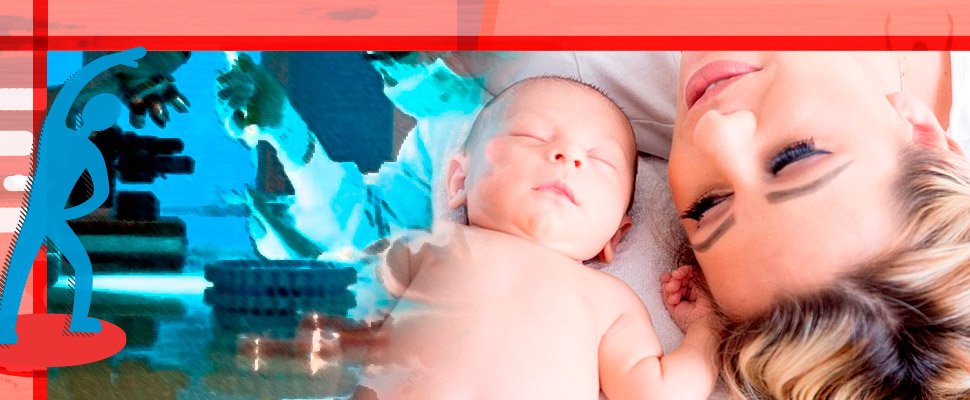What are stem cells and why should you know?
Listen this article
If you are interested in performing this procedure when your baby is born, Ignacio Munitiz tells you everything you need to know

Surely, you have heard that the umbilical cord of babies has stem cells that serve to treat different diseases. However, you may not be so aware of what this procedure is about and why you should do it when your baby is born.
To solve all the doubts that there is on the subject, LatinAmerican Post interviewed exclusively Ignacio Munitiz, CEO of America Cell Bank (ACB). In this interview, Munitiz explains what these cells are, why you should do this procedure, and he gives information that may be relevant when making the decision.
"Stem cells is the medicine of the future", Ignacio Munitiz
What are Stem cells?
The first thing you should know is that stem cells are used as a treatment since the last century. Munitiz explains that since 1990 is when they begin to use more normalized and intense these cells in oncological diseases, such as leukemia and lymphomas.
According to information from ACB, "the first therapeutic transplant with umbilical cord stem cells was performed by Dr. Eliane Gluckman in 1988 and to date, more than 1,000,000 transplants have been performed using this blood to successfully treat more of 80 diseases."
America Cell Bank affirms that stem cells "are derived from other cells, by biological mechanism of differentiation (capacity to generate other cell types) and proliferation (ability to replicate and divide)".
Now, it should be noted that stem cells are not only found in the umbilical cord, they are also found in the bone marrow and preferential blood. In fact, there are two major types of cells: those related to blood and oncological diseases (hematopoietic cells) and those related to tissues, cartilages and bones (mesenchymal cells) for regenerative medicine.
Also read: 4 common diseases in pregnancy
In the case of cord cells, they are characterized "by their biological immaturity and consequently their greater plasticity, compared with other adult stem cells [such as those found in the bone marrow]," explains ACB.
Why should I collect my baby’s stem cells?
Stem cells should be considered as a life insurance that can be used in case the baby develops a disease whose treatment requires this type of cells. In case your baby had leukemia or lymphoma and you have collected their cells, the treatment will be much more effective, because his/her sample will be 100% compatible.
Munitiz explains that "in the hypothetical case that the child manifests one of 70 diseases, he/she has a huge chance of being able to overcome the disease because it has stored the stem cells."
The question that arises is: what happens if I did not store my baby's cells? According to the CEO of ACB, the child "would depend on an international donor or a compatible brother". This means waiting for a period of time that will complicate the pulling of the disease, because the longer the wait is, the less effective the treatment will be. There is also the possibility that your baby cannot get a donor, so he/she would have a much lower survival rate.
Many will wonder if collecting the cells of a single baby will be enough for a whole family. In this regard, Munitiz emphasizes that this "is not like when you buy an Aspirin and it is a pharmacological component that works for everyone. In the end, it is worth for the child, it can also be worth 50% for the brother ".
In the case of parents, there will also be a 50% compatibility and the probability will decrease as the blood relationship goes away. The recommendation of the doctor is to collect the cells of each child, so everyone will be "insured".
"Stem cells are not science fiction, they are a reality of clinics around the world," Ignacio Munitiz.
Where are they stored?
There are two types of banks to keep the samples: public banks and private banks. In the Latin American case, the majority of banks are private since collection of these cells has not yet been regularized.
Also read: Does being a youtuber go hand in hand with motherhood?
In the case of ACB, being an institution with a global presence, the procedure is governed by international regulations that ensure that collection and storage are effective. The ACB laboratory in Colombia is registered by the American FDA.
What are the stem cells for?
As Munitiz explains, the stem cells found in the umbilical cord (hematopoietic) are used to treat hematological diseases such as leukemia. However, it is not the only disease with which stem cells are used. Lymphomas, inherited erythrocyte abnormalities, bone marrow cancer, solid tumors, and others may also be treated.
Stem cells are also used in regenerative treatments, especially the mesenchymal cells are used to regenerate tissues, cartilages, and bones. For example, it is currently being applied to Dermatology, Traumatology, Ophthalmology, Cardiology, Neurology, among others.
Is the procedure dangerous?
No, the procedure does not affect or is dangerous for the baby or for the mother. Once the child is born, the umbilical cord is cut and that's when the collection is done. That is to say that there is no risk of hurting either the mother or the newborn.
Only the cells of the blood are collected?
No, mesenchymal cells that have other uses are also collected. In the case of blood cells (hematopoietic), these are those that serve to treat oncological diseases such as leukemia. On the other hand, mesenchymal cells are used for regenerative medicine (tissues, bones and cartilage).
Collecting both cells is a life insurance that will revolutionize the medicine of the future. The doctor says that storing tissue is having medicine for many diseases. Having these cells would be a guarantee to improve the quality of life, as they would be used in cell therapy to regenerate tissues, bones, and cartilage.
Let's talk about prices
In the Colombian case, the average of the collection and storage during 25 years has a cost of COP $ 8,500,000, but thanks to ACB’s agreements with the clinics and with the Prepaid Medical Insurers, the cost can go down to $ 5,100,000 COP. On average, it annually costs approximately COP $ 200,000. While this is a considerable sum, in the long term it is a sum that can be paid.
LatinAmerican Post | Marcela Peñaloza
Translated from "¿Qué son las células madre y por qué deberías saber?"





